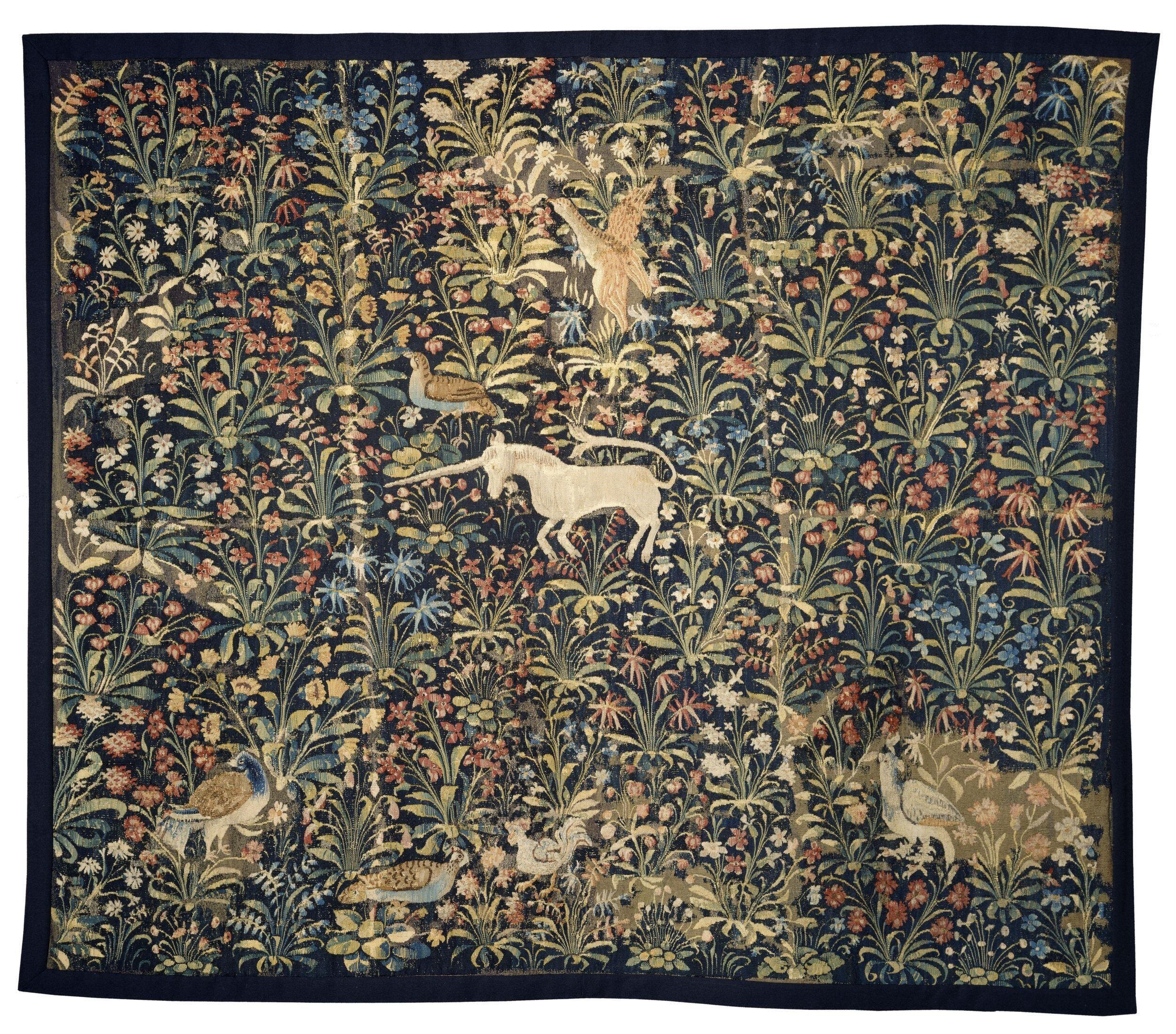
The unicorn may be a mythical beast, but centuries’ worth of art and literature have made it quite real. An endless parade of Medieval tapestries, ancient Greek texts, Renaissance paintings, Bronze-Age seals, and fantasy novels has celebrated the horse-like animal with a single horn, seemingly willing it into being, compounding the creature’s ongoing mystique. “No place is more enchanted,” as Peter S. Beagle wrote in his 1968 book The Last Unicorn, “than one where a unicorn has been born.”
Soon, the unicorn will be casting its spell at Scotland’s new Perth Museum, which will open “Unicorn” in March. The show is the first U.K. exhibition to survey the cultural history of the unicorn—also the national symbol of Scotland—from antiquity to present day. The animal’s footprint will be traced through illustrations, manuscripts, coins, paintings, sculptures, and tapestries, some of them historical loans and others objects of significance to the local community.
“With a long, complex, and often contradictory history, the unicorn has been a popular subject for contemporary artists, writers, musicians, filmmakers, and activists,” said JP Reid, senior new projects officer at Culture Perth & Kinross, the trust that co-manages the museum. “It is a symbol through which ideas like authenticity, belief, gender, and nationalism can be explored.”
Illustrated page from the Book of Hours by Grote Geert (1480–90), Delft, Netherlands. © Fitzwilliam Museum, Cambridge.
Some of the stars in the show include late-Renaissance painter Luca Longi’s Lady and the Unicorn (1534–40), on loan from the Museo Nazionale di Castel Sant’Angelo and on view in the U.K. for the first time, as well as John Duncan’s dreamy 1920 canvas The Unicorns, loaned from the Dundee Art Galleries and Museums Collection.
A 19th-century ceremonial rod topped with a silver unicorn, which was featured in the coronation of King Charles III, is included here, alongside an Elizabethan pendant, crafted with narwhal tusk, once believed to come from unicorns.
“The Danny Jewel” pendant, England (ca. 1550). © Victoria and Albert Museum, London.
“Unicorn” will also delve into the contemporary resonance of the legendary beast in artifacts including toys, video games, and films. Its final section further explores how the unicorn has emerged as an icon of the LGBTQI+ community through six newly commissioned works by artists Alex Hayward, Ciaran Cannon, David Hutchison, GainAgain, Francis Macleod, and Kathryn Hanna.
The exhibition inaugurates the Perth Museum, which is opening following a £26.5 million ($34.2 million) redevelopment of the former City Hall, an Edwardian building that once hosted events from concerts to political conferences. Upon launch, the museum will also permanently house the Stone of Destiny, one of the U.K.’s most significant relics that is returning to Perthshire for the first time in seven centuries.
“The unicorn is an enduring symbol of Scotland’s enchanting history, culture, and landscape,” said Malcolm Offord, the U.K government minister for Scotland, in a statement, “so it is fitting that Perth Museum has chosen this as the theme of its first exhibition.”
See more works in the exhibition below.
Gold coin of James IV, King of Scots, Edinburgh (1488–1505). © National Museums Scotland.
John Duncan, The Unicorns (1920). © Dundee Art Galleries and Museums Collection.
Carved oak panel. © National Museums Scotland.
Carved narwhal tusk, England (ca. 1125–1150). © Victoria and Albert Museum, London.
Detail of a gilded and enameled unicorn holding a shield with the lion rampant, atop a silver baton, part of the regalia of the Usher of the White Rod. © By Permission of the Trustees and Factor and Commissioner of the Walker Trust. Photo: National Museums Scotland.
“Unicorn” is on view at Perth Museum, Perth Museum, St John’s Place, Perth, Scotland, March 30 through September 22.
More Trending Stories:
A Case for Enjoying ‘The Curse,’ Showtime’s Absurdist Take on Art and Media
Artist Ryan Trecartin Built His Career on the Internet. Now, He’s Decided It’s Pretty Boring
I Make Art With A.I. Here’s Why All Artists Need to Stop Worrying and Embrace the Technology
Sotheby’s Exec Paints an Ugly Picture of Yves Bouvier’s Deceptions in Ongoing Rybolovlev Trial
Loie Hollowell’s New Move From Abstraction to Realism Is Not a One-Way Journey